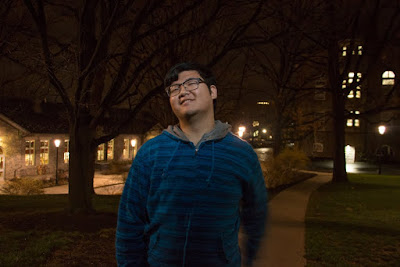Why are speedlights a great source of light?
- Can be bounced off of the wall or ceiling to fill a dark space
- Can be used to brighten a subject
- Smaller footprint than studio lights
- Portable
- Can work with modifiers to create a bigger light source (i.e. umbrellas, softboxes, etc.)
- Cheaper than purchasing strobe packs
The speedlight can be synced with the camera in a number of ways:
- Hot shoe
- Corded i.e. off-camera TTL sync cord, attaches to hot shoe
- Should maintain TTL functions
- Requires holding by hand off-camera - limited range of placement
- Radio transceivers such as pocket wizards
- These can move far away from camera and therefore give the most control
- Long shutter, long arms - this is a term I made up to describe using a long shutter speed (around 1/2 second or longer) and manually pressing the fire button on the flash
- Built-in flash as master - this should work if speedlight is set to visual slave, but may not work in all cases
- Hot shoe speed light as master (same as above)
First we used the flash on-camera and used adjustments to the speedlight power on manual setting along with aperture and ISO adjustments to get an exposure that looked good for our subject.
 |
| ISO 800, f8, 1/60 sec, flash on camera |
Next we adjusted shutter speed to control the lighting ratio between subject and background
 |
| ISO 800, f8, 1 sec, flash on camera |
 |
| ISO 800, f8, 2 sec, flash on camera |
Next we added movement into the mix to create some interesting effects.
 |
| ISO 1600, f 4, 1/2 second, flash on camea |
 |
| ISO 1600, f 4, 1/2 second, flash on camera |
Then we moved the speedlight off the camera, first using the TTL cord and then using pocketwizards or "long shutter, long arms" in the case of one speedlight for which the PC connection was not working.
We also went over various modifiers that can be used with speedlights
Modifiers for on-camera speedlight
- Diffusion sheets
- Cinefoil snoot
- Gels
Modifiers for off-camera speedlight
- Diffusion sheets
- Softbox + bracket
- Umbrella + bracket
- Gels
- Cinefoil snoot


As you can see, getting the flash off-camera gives you a lot more versatility for direction of light and also what modifiers you can use.
Lastly we added movement back into the mix for some spooky results.


The "ghost" effect is caused by the subject moving out of the way after the flash has fired (during a long exposure) so we see their shape sharply with good exposure thanks to the flash but after they move out of the way and the long exposure continues some light from the background also collects in the spot where they were standing so we see a double-exposure effect.
A great source to learn more about working with these types of lights is the Strobist blog. I recommend starting with Lighting 101 and then clicking through each next tutorial from there. Strobist contains many wonderful tips from the basics of assembling an affordable speedlight kit to how to sync to more advanced tips and assignments.






No comments:
Post a Comment